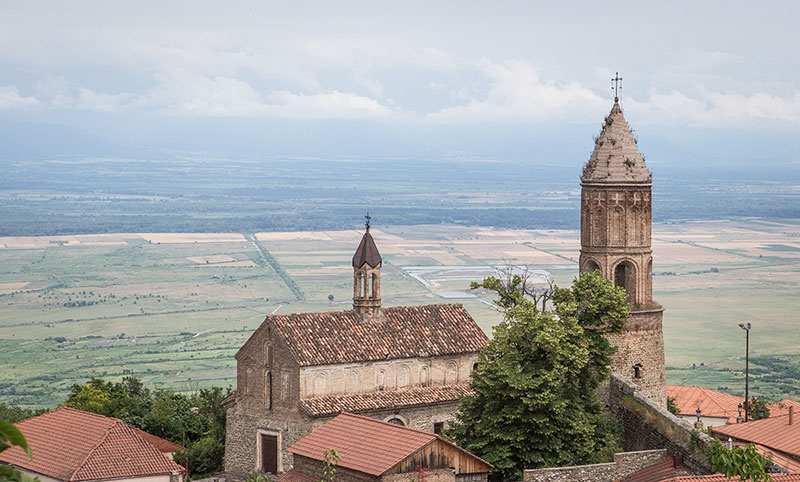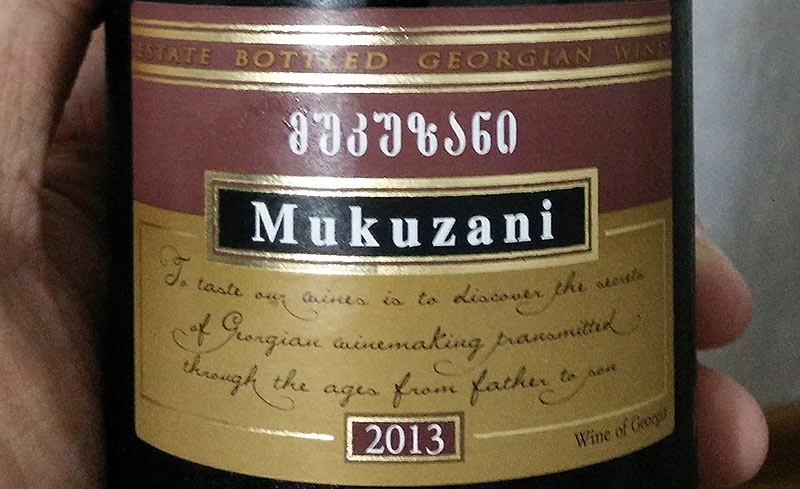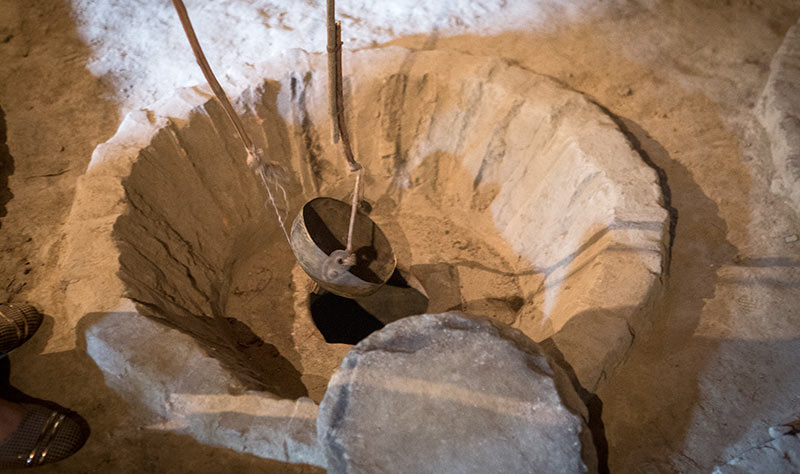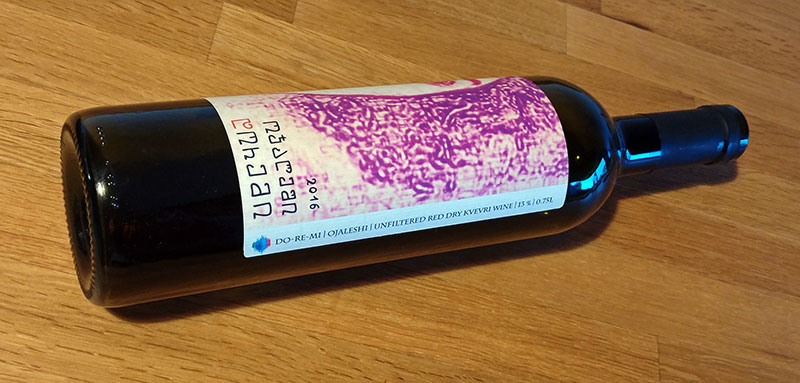Despite being in the top 25 producers in the world according to OIV statistics, with around 100 million liters of production a year, Georgia is not one of the world’s largest winemaking countries. What makes it unique is the incredible length of time that wine has been produced in Georgia (as well as the greater Caucasus region) which, due to an archeological dig in the Kvemo Kartli region, places wine production as having been ongoing for at least the last 8,000 years.
Two Georgias?
There are essentially two unrelated worlds when it comes to the wines of the country. The first sector is the biggest and claims somewhere around 98-99% of the total production. These are the larger producers who range from former USSR collectives to modern, purpose-built cellars like Badagoni just outside the town of Telavi.
While these producers primarily use the native Georgian grapes (with an emphasis on Rkatsiteli and Saperavi) they produce a huge assortment of wines ranging from still to sparkling. The Semi Dry and Semi Sweet wines that are a carryover from Soviet days form a large percentage of production as well and quite unsurprisingly are exported almost exclusively to former Soviet Bloc countries. What they make very little to none of are the kvevri wines, opting instead for what the locals call, “European technology” and thus we enter into the other world of wine in Georgia.
For the producers of kvevri wines there are very few who produce more than 50,000 bottles and most, massively less. In direct opposition to the large producers, they export to a vast and varied rainbow of countries around the world. While often sold under the “natural wine” umbrella, they can vary a great deal in style and offer a massively different taste profile than what one might expect from the “European” wines.
Organizations
The primary organization for wine in Georgia is the Georgian National Wine Agency (GWNA) which oversees most every aspect from certification of cellars and appellations, to promotion. In addition to them, there is the Georgian Wine Association (GWA) and the Georgian Wine Tourism Association (GWTA). As there is a lot of G, W, & A in these acronyms it can get confusing as to who does what.
Essentially the GWNA is fully state-run. The GWA and GWTA are a mix of private/public where the members pay into the organization but this means that not every winery in the country is included as shown by the GWA currently having just 22 members of the 100 or so cellars that exist in Georgia–you’ll never hear the same number twice in terms of an exact count of the total cellars.
Is there overlap in the agencies? Indeed as the GWNA will often fund initiatives in the other two and moving forward, there are plans to increase this and work towards a defined set of common goals. The future of the GWNA looks bright though as the recently-promoted Minister of Agriculture, Levan Davitashvili was originally the director of the GWNA and is one of the politicians that all winemakers put a great deal of faith in.
The Kvevri
If you think of the GWNA is “the man”, the kvevri producers would be the group of counterculture hippies doing their own thing. At the same time, they’re responsible for a huge percentage of the attention directed towards Georgian wine at the moment. When international wine buyers arrive and are taken to the large producers, they’re often shocked at the difference in the wines from kvevri.
This ancient winemaking technique using large terracotta amphorae has rapidly caught on in the last decade, leading to the forming of this Qvevri Association and the New Wine Festival in May where they celebrate the opening (and drinking) of the kvevri. Behind all of this are several people including Malkhaz Kharbedia who is also one of the very, very few people based in Georgia, writing about the wines and events on his website vinoge.com
Winemakers
A winemaker in Georgia isn’t just someone producing wine, they’re bridges, ambassadors, and at times, men of the faith. One of the main winemakers that everyone in Georgia references is Gogi Dakishvili. Few Georgians have formal winemaking training and they’ll often state, “any Georgian man is a winemaker” so as they’ve been turning to more professional careers in winemaking, they’ve realized that there are certain scientific aspects that need to be dealt with and this is where Gogi has come in as something of a godfather to all the young winemakers while balancing his time working at Teliani Valley as well as his family wineries, Teleda and Orgo that produce kvevri wine.
A discussion of winemakers and champions of Georgian wine simply can’t be had without mentioning John Wurdeman. While an American by birth he and his co-founder, Gela Patalishvili’s Pheasant’s Tears is unarguable one of the most well-known kvevri cellars in the country. John has been instrumental in attracting attention from importers like Les Caves de Pyrene in the UK which has then gone on to be a huge champion of Georgian wines.
Sometimes overlooked, Bishop David and Father Gerasim of the Alaverdi Monastery have been extremely important in reinvigorating this monastery that can trace its founding back to the 6th century. Not only have they carried forth the tradition of making wine in the monastery, but they’re also making some incredibly elegant wines from the kvevri that serve as standard bearers for the rest of the genre.
The Georgian Somm
Given that “a home in Georgia without a cellar isn’t a home” most Georgians have grown up with homemade wines and the idea of ordering it in bottled format is quite recent. As such, the craft of the sommelier is also up-and-coming in the country.
There is however a Sommelier Association headed up by Shalva Khetsuriani. While in a state of growth, they manage to be active and are responsible for bringing the initial WSET 2 classes to the country in order to improve the level of overall world wine knowledge and bring the level of service along with it.
Restaurants
Wine with food are as inseparable in Georgia as in Italy. Despite this, fine wine lists at restaurants are still a work in progress. It has to do with the common practices of either having a simple, unnamed house wine or then a larger winery “buying out” the wine list, paying the restaurant to only stock their wines.
There are a handful of restaurants in Tbilisi that are working to buck this trend. Naturally, one of the most well-known, Azarphesha, is co-owned by John Wurdeman and in addition to having excellent local dishes, it packs a massive wine list. Another location fighting the good fight in this regard is G.Vino. They have a different take on the food than Azarphesha but are just as devoted to having an excellent list of Georgian wines. It’s advisable to order a bottle there as it offers a lot more selection than by-the-glass.
Lastly, there’s the wine bar/restaurant/hotel, Vinotel on the other side of the Mtkvari River. A lovely building, they too have a great wine list but work to mix in a bit more of the non-kvevri producers to give a fuller scope of all the wine produced in Georgia.
Wine Bars
Wine bars aren’t plentiful, but the few that exist in Georgia are passionate. The most famous of course is Vino Underground which again, counts John Wurdeman as a co-owner but he has partnered with several other of the small kvevri producers to have a space very close to Freedom Square where you can usually find any of the winemaking partners, having one to many glasses.
While Tbilisi is truthfully the center of Georgia’s universe with about a third of the total country’s population living there, Batumi is also quite active and there, on the Black Sea you can find Wine Room Batumi which is a wine bar that features various winemakers on rotation and is run by passionate owners.
Communication
Of course everything happening in Georgia could be like a tree falling in the woods if there were no one to spread the word internationally. While John Wurdeman has worked at this tirelessly for a decade, there is also Lisa Granick MW who has been visiting and living in Georgia on and off since 1990. In 2011, she returned as part of a development project by USAID to bring in and show the wines to people believed to be influential in the world wine trade. The success of this as well as other initiatives has been palpable given that the profile of the wines has risen massively in recent years.
Untold Influential
Taking stock of the current state of Georgian wines which are dominated by the big producers, the most influential person is in fact not a person as all, but the grape subsidies. While currently ranging from 0.45GEL to 2GEL per kilo depending on the overall price, region, and type, they are partly responsible for encouraging overproduction and feeding of grapes in to the larger wineries and stymieing the development of more boutique wineries.
One winemaker in Kakheti has over one million liters in the tanks dating back to 2008 because of deciding to take the subsidies. A good deal of this is due to the lingering effects of the 2006 Russian Embargo but it continues to be an issue as the subsidies have become a political issue and no government wants to remove them for fear of the backlash. Of course until they do remove them, they won’t be able to let the price for grapes float properly and adjust depending on quality and region.
Despite still exporting huge amounts to former Soviet Bloc countries, these markets are changing and younger drinkers are drifting towards dry wines. The Georgians are at a crossroads and in the next years, as the spotlight that is shown upon them potentially shifts to another up-and-coming region in the world, they will have to continue to evolve and strive to make the best wine possible as opposed to aiming mainly for what sells, no matter how cheaply, and to unstable markets like Russia while balancing the books with subsidies that could easily dry up any moment.



